Grave Creek Mound – One Of North America’s Most Curious Ancient Monuments
Ellen Lloyd - AncientPages.com - The Grave Creek Mound (also known as the Mammoth Mound) is located in Moundsville, West Virginia. It is one of the most curious ancient monuments in North America.
At first sight, it appears to be just one of many mounds we find in the country, but there are several reasons why this particular mound is unique.
This is the biggest mound the Adena people have ever constructed. Constructing the hill required the movement of more than 60,000 tons of earth—about three million basket loads of earth!
North America had four known mound-building cultures - the Poverty Point, Adena, Hopewell, and Mississippian cultures. Their names, usually taken from where relics of their societies were found, refer to a way of life.
The Adena lived in parts of present-day Ohio, Indiana, Wisconsin, West Virginia, Kentucky, New York, Pennsylvania, and Maryland.
The earliest known photo of the Mound - Credit: W.S.Keyser
It's important to point out that the Adena culture is not the name of any American Indian tribe. Researchers have yet to learn what these people called themselves. Their name originates from the estate of Ohio Governor Thomas Worthington, which he called Adena.
The Adena culture flourished between 1000 and 200 B.C. At its height, it reached a population of between eight and seventeen million.
Moundsville, West Virginia, just outside of Wheeling, is home to the Grave Creek Mound. Credit: Adobe Stock - aceshot
Why The Grave Creek Mound Is Unusual
Archaeologists and historians think the Adena people were the first culture in North America to construct earthen mounds in which they regularly buried their dead. The mounds were often shaped in animal or geometric designs.
Standing 65 feet (19.5 m) tall with an outer circumference of 910 feet (273 m), the mound was an awe-inspiring sight, but it was certainly not built overnight.
Grave Creek Mound was constructed in stages over 100 years between 150 and 250 B.C.
What is unusual about this mound is its size. The Adena people in the area constructed several other burial mounds. However, these mounds are much smaller, ranging from 20 to 300 feet (6 to 90 m) in diameter.
Why was it so crucial for the Adena people to build a massive mound like the Grave Creek Mound?
The Grave Creek Stone - Credit: Smithsonian Institution - Public Domain
We do know that the Adena buried their dead in prominent mounds that archaeologists believe may have served as territorial markers. Sometimes, the mounds were accompanied by small, circular earthen enclosures that may have surrounded ritual spaces.
Archaeologists have discovered several ancient objects inside the burial mounds. Deceased individuals were either cremated or laid on their backs and were often surrounded by artifacts such as jewelry and tools. Most likely, the Adena people believed the deceased would need these objects in their afterlife.
The Controversial Grave Creek Stone
The Grave Creek Mound was first discovered in the late 1700s by English immigrant Joseph Tomlinson, who built a house just before the mound.
About 60 years later, Tomlinson's descendant Jesse started digging tunnels into the mound and discovered two burial chambers filled with skeletons, jewelry, and seashells.
An artistic rendering of the Grave Creek Stone on display at the Grave Creek Mound and Archaeological Complex in Moundsville, West Virginia. Photo courtesy of Rebecca Taylor (fair use)
The controversial Grave Creek Stone was unearthed in 1838 during the burial mound excavation. A small sandstone disk was inscribed on one side with some twenty-five characters.
According to Henry Rowe Schoolcraft, a renowned geologist who visited the site in 1843, the Grave Creek Stone was discovered in the upper vault, along with seventeen hundred beads, five hundred seashells, five copper bracelets, and one hundred and fifty plates of mica. It was "a small flat stone, of an ovate shape, containing an inscription in unknown characters."
It is impossible to say today whether Grave Creek Stone was genuine or a fake because its whereabouts are unknown.
If genuine, it could provide evidence the Adena people mastered a primitive alphabet.
It's likely just a coincidence, but the Grave Creek Mound is remarkably similar in design to the prehistoric earthen Silbury Hill.
Written by Ellen Lloyd – AncientPages.com
First version of this article was published on January 10, 2018
Copyright © AncientPages.com All rights reserved. This material may not be published, broadcast, rewritten or redistributed in whole or part without the express written permission of AncientPages.com
Expand for referencesM. C Read - Inscribed stone of Grave Creek mound: Report of M.C. Reid of Hudson, Ohio
Greg Roza - The Adena, Hopewell, and Fort Ancient of Ohio (The Library of Native Americans)
More From Ancient Pages
-
 Silver Offers Evidence Viking Age Started Much Earlier Than Previously Thought – Archaeologist Says
Archaeology | Nov 7, 2023
Silver Offers Evidence Viking Age Started Much Earlier Than Previously Thought – Archaeologist Says
Archaeology | Nov 7, 2023 -
 Mysterious Nine Worlds Of Yggdrasil – The Sacred Tree Of Life In Norse Mythology
Featured Stories | Mar 8, 2017
Mysterious Nine Worlds Of Yggdrasil – The Sacred Tree Of Life In Norse Mythology
Featured Stories | Mar 8, 2017 -
 War God Ares Was Brutal, Merciless And Disliked By Greeks But Popular In His Love Affairs
Featured Stories | Apr 16, 2021
War God Ares Was Brutal, Merciless And Disliked By Greeks But Popular In His Love Affairs
Featured Stories | Apr 16, 2021 -
 Vikings’ Long Distance Trade Reached The Arctic – Deer Antler Combs Reveal
Archaeology | Sep 19, 2023
Vikings’ Long Distance Trade Reached The Arctic – Deer Antler Combs Reveal
Archaeology | Sep 19, 2023 -
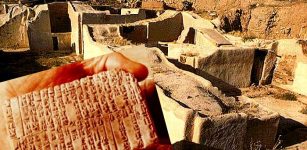 Mysterious Ancient City Of Ebla That Existed Thousand Years Before Biblical Kings David And Solomon
Ancient Mysteries | Aug 14, 2015
Mysterious Ancient City Of Ebla That Existed Thousand Years Before Biblical Kings David And Solomon
Ancient Mysteries | Aug 14, 2015 -
 Excavations Of 7th Century Shipwreck In Israel Reveal Christian And Muslim Symbols
Archaeology | Aug 1, 2020
Excavations Of 7th Century Shipwreck In Israel Reveal Christian And Muslim Symbols
Archaeology | Aug 1, 2020 -
 Mabon Festival And The Autumn Equinox Celebrated By Pagans
Ancient Traditions And Customs | Sep 19, 2024
Mabon Festival And The Autumn Equinox Celebrated By Pagans
Ancient Traditions And Customs | Sep 19, 2024 -
 Mystery Of The Lydenburg Heads
Artifacts | Jun 13, 2014
Mystery Of The Lydenburg Heads
Artifacts | Jun 13, 2014 -
 Etowah Indian Mounds: A Legacy Of The Ancient Mississippian Culture
Featured Stories | Oct 9, 2018
Etowah Indian Mounds: A Legacy Of The Ancient Mississippian Culture
Featured Stories | Oct 9, 2018 -
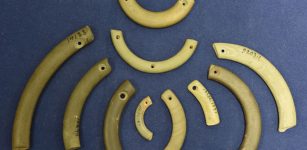 Stone Age Friendship Ornaments Examined By Scientists
Archaeology | Apr 25, 2022
Stone Age Friendship Ornaments Examined By Scientists
Archaeology | Apr 25, 2022 -
 Strzyga (Strix): Slavic Malevolent Winged Female Demon With Two Souls That Usually Haunts Churches, Towers, Barns
Featured Stories | Aug 9, 2019
Strzyga (Strix): Slavic Malevolent Winged Female Demon With Two Souls That Usually Haunts Churches, Towers, Barns
Featured Stories | Aug 9, 2019 -
 Lusatian Culture: Ancient Traders Of Central Europe Built Strongly Fortified Settlements To Withstand Scythian Attacks
Civilizations | Jan 27, 2024
Lusatian Culture: Ancient Traders Of Central Europe Built Strongly Fortified Settlements To Withstand Scythian Attacks
Civilizations | Jan 27, 2024 -
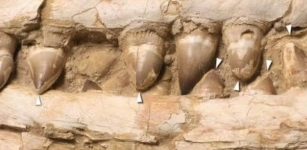 ‘Sea Monsters’ Were Real Millions Of Years Ago: New Fossils Tell About Their Rise And Fall
Featured Stories | Oct 8, 2022
‘Sea Monsters’ Were Real Millions Of Years Ago: New Fossils Tell About Their Rise And Fall
Featured Stories | Oct 8, 2022 -
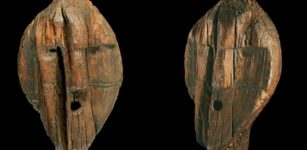 Does The Shigir Idol Depict Demons And Evil Spirits?
Archaeology | May 3, 2018
Does The Shigir Idol Depict Demons And Evil Spirits?
Archaeology | May 3, 2018 -
 Ancient Tombs Arranged In The Image Of A Galaxy Discovered In Sudan
Archaeology | Jul 8, 2021
Ancient Tombs Arranged In The Image Of A Galaxy Discovered In Sudan
Archaeology | Jul 8, 2021 -
 Hidden Text Of Medical Book By Doctor Galen Read For The First Time In 1000 Years
Archaeology | Mar 24, 2018
Hidden Text Of Medical Book By Doctor Galen Read For The First Time In 1000 Years
Archaeology | Mar 24, 2018 -
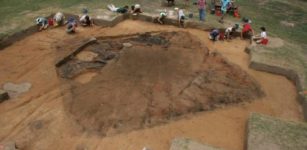 Archaeological Discoveries At Fort San Juan Reveal Hidden History Of Conquistadors In American South
Archaeology | Mar 12, 2018
Archaeological Discoveries At Fort San Juan Reveal Hidden History Of Conquistadors In American South
Archaeology | Mar 12, 2018 -
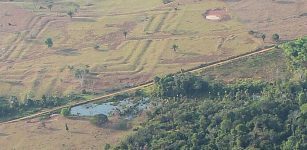 Millennial Pre-Colonial Cultural Influence Is Evident In The Amazon Forest
Archaeology | Jun 28, 2020
Millennial Pre-Colonial Cultural Influence Is Evident In The Amazon Forest
Archaeology | Jun 28, 2020 -
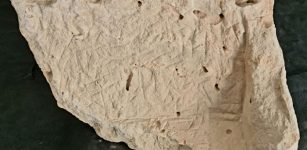 3,500-Year-Old Stone Inscribed With A Curse Against The City’s Governor Discovered In Jerusalem
Archaeology | Jul 13, 2022
3,500-Year-Old Stone Inscribed With A Curse Against The City’s Governor Discovered In Jerusalem
Archaeology | Jul 13, 2022 -
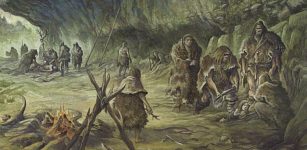 Neanderthals Buried Their Dead – New Evidence
Archaeology | Dec 10, 2020
Neanderthals Buried Their Dead – New Evidence
Archaeology | Dec 10, 2020





